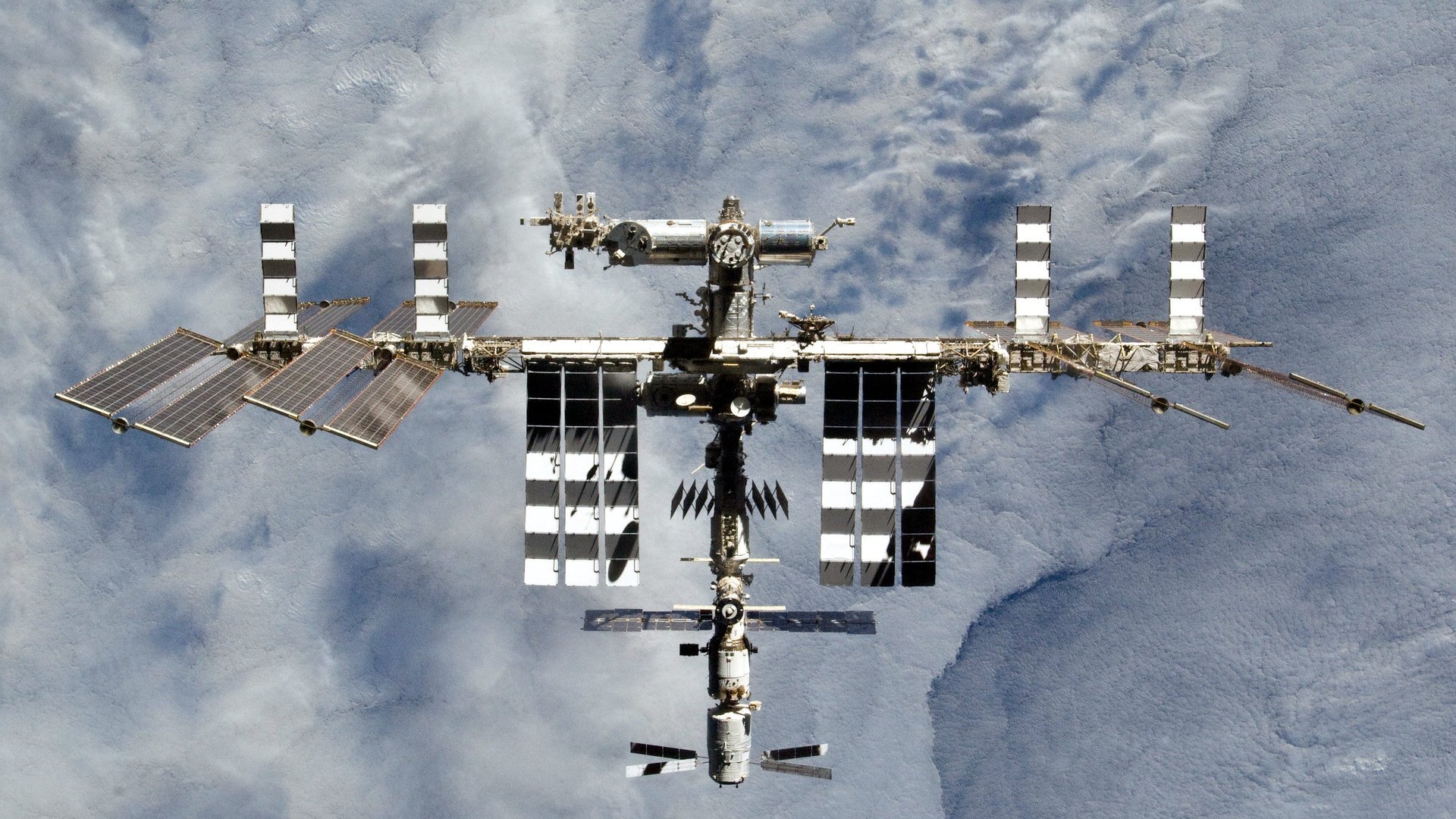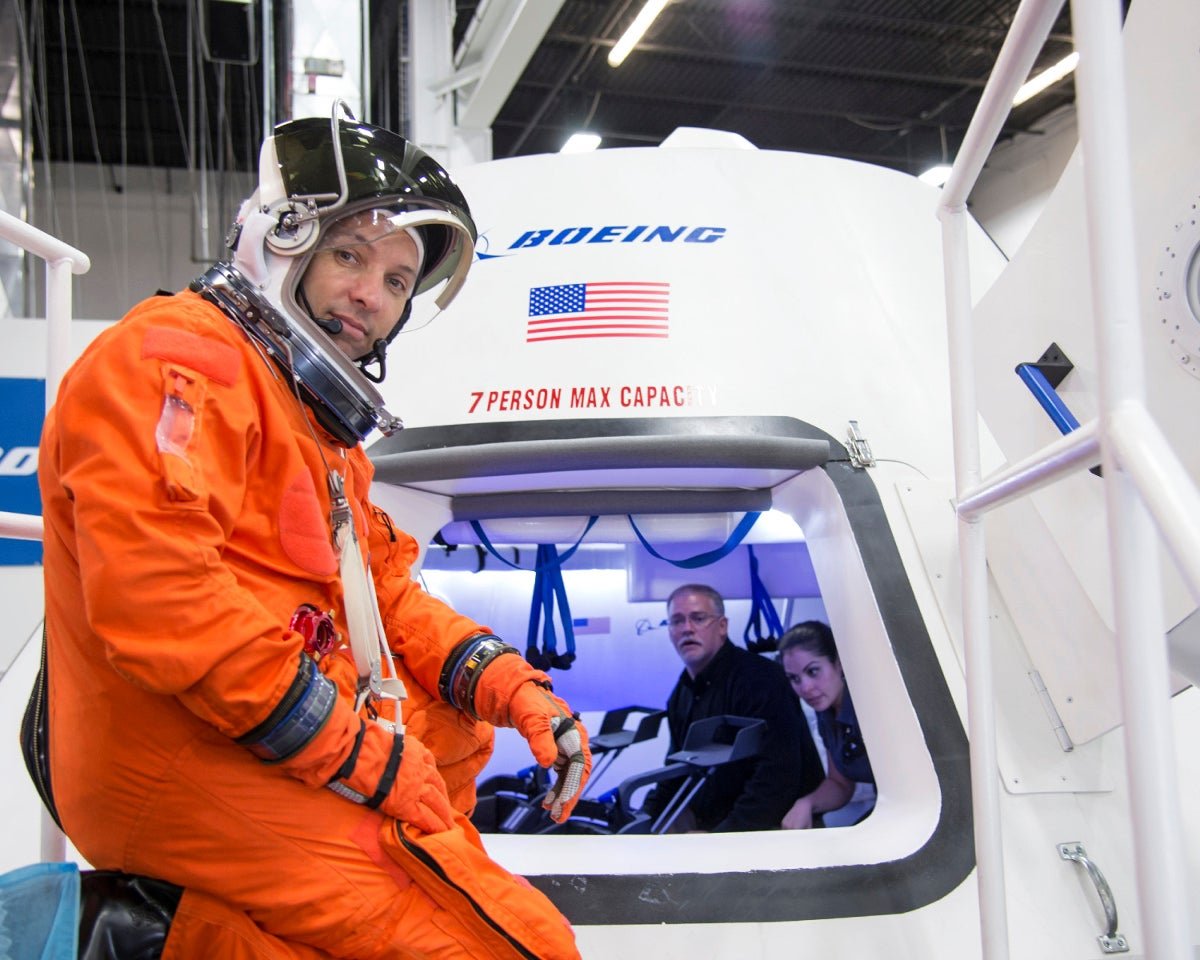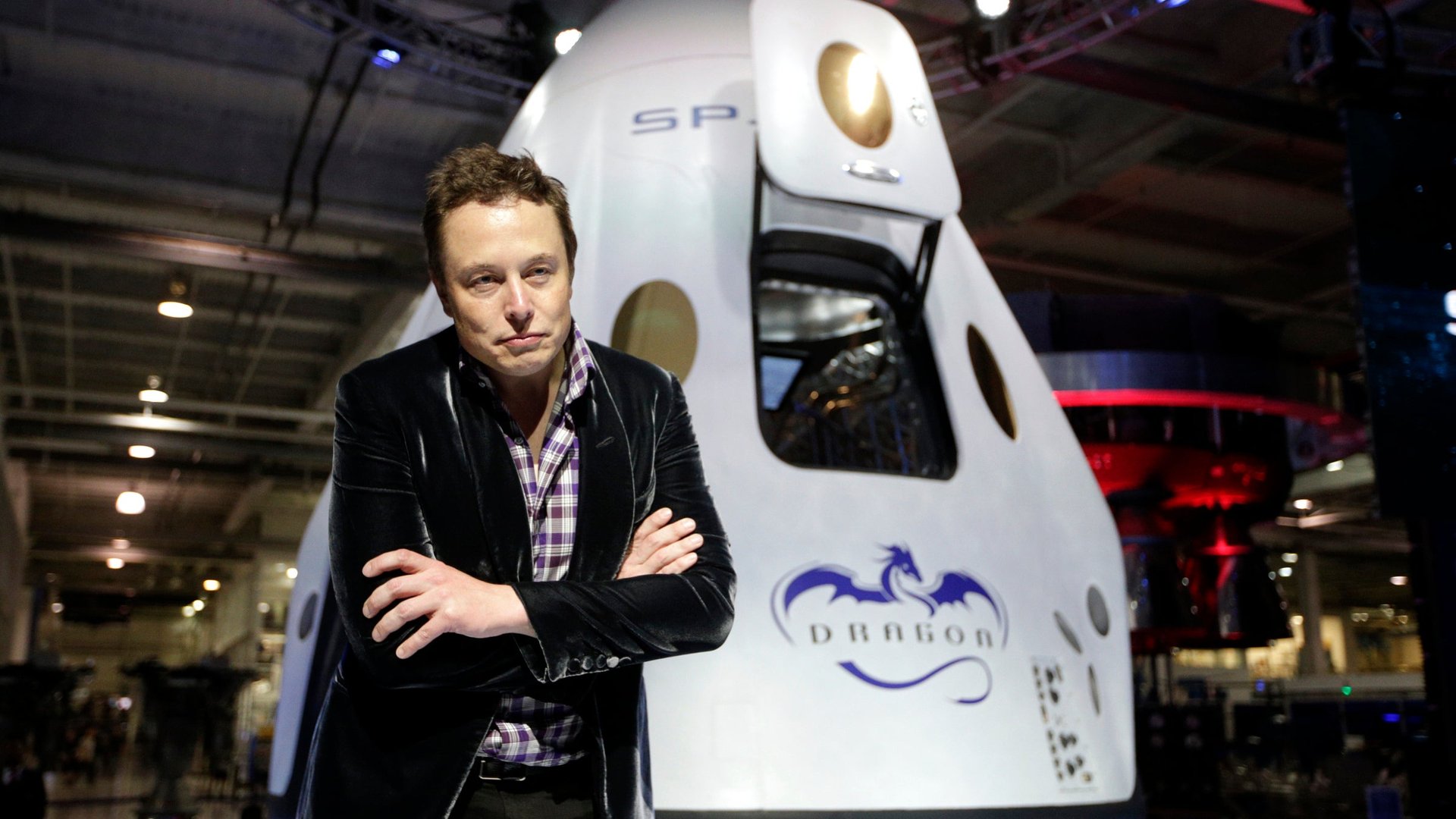SpaceX and Boeing are running out of time to fly astronauts into space
Pressure is rising on Boeing and SpaceX, the two companies trying to prove the US can still fly humans to space. Both are expected to miss a November 2019 deadline for producing spacecraft certified as safe enough to transport astronauts—which means NASA, humiliatingly, could end up locked out of the International Space Station next year.


Pressure is rising on Boeing and SpaceX, the two companies trying to prove the US can still fly humans to space. Both are expected to miss a November 2019 deadline for producing spacecraft certified as safe enough to transport astronauts—which means NASA, humiliatingly, could end up locked out of the International Space Station next year.
NASA’s multi-billion dollar effort to partner with private companies to fly astronauts, known as the commercial crew program, is the most serious effort to make space travel business as usual. If it fails to deliver, dreams of venture investment leading to lunar mining and orbital hotels will be even more unlikely.
The Government Accountability Office projected last week (pdf) that the two companies’ vehicles won’t be certified for operational use until virtually the beginning of 2020. That could leave a gap of one or more months between the last US astronauts to fly and return on Russia’s Soyuz spacecraft, and the first flights of the private US spacecraft.
The US is currently dependent on Russia to reach the International Space Station. Since it takes years to arrange for a Soyuz flight, NASA has essentially no option to fill the gap, save delaying existing flights a month or two. Without US astronauts on board to operate the space station, the ISS cannot function, according to the space agency, which is “brainstorming” new solutions.
“Spacecraft and rockets designed for NASA’s Commercial Crew Program must meet the agency’s safety and technical criteria before the companies will be certified to launch crews into space,” a NASA spokesperson told Quartz. “Successfully meeting those requirements has always taken precedence over schedule.”
What’s safe, exactly?
It’s dangerous to send people into space. Simply getting to orbit requires a vehicle that reaches 17,500 miles per hour or more, burning tons of kerosene and liquid oxygen in just a few minutes. And that’s when the fun starts, because one of the biggest dangers faced by astronauts are micrometeroids and debris that also orbit the earth and could damage or destroy their spacecraft.
The US commercial crew program evolved to replace the Space Shuttle, which flew for the last time in 2011. In figuring out how to make sure the spacecraft it buys are safe, NASA came up with a metric called “Loss of Crew” that attempts to forecast the odds of a lost astronaut. Their analysts determined that the space shuttle had a 1 in 90 chance of losing a crew member, though the first space shuttle launch had a loss of crew probability of 1 in 12.
NASA has mandated a 1 in 270 requirement for these vehicles, but reaching that number is tough: NASA’s commercial crew program leader Kathy Leuders told me in 2017 she doesn’t expect either vehicle to make that standard. Instead, NASA expects they’ll receive waivers to operate at a safety threshold above a 1 in 150 chance of losing a crew member.
The new audit, however, notes there is no agreement about how to determine this number between the agency, the commercial crew program, its safety officer, and the specific contractors. Some are using old data about orbital debris, while others are using newer data with more space debris catalogued that makes reaching the safety benchmark more difficult. Some are including the effects of operational activities to reduce risk beyond the design of the vehicle, like inspecting the spacecraft for damage with high-definition cameras after they reach orbit, while others do not.
NASA conceded that multiple approaches could be “confusing,” but said that ultimately the commercial crew program would have final authority over the safety of the vehicles.
Time flies
The commercial crew program grew from a public-private partnership with SpaceX and OrbitalATK that began in 2006, which allowed for regular cargo service to the International Space Station. In 2014, the Obama administration attempted to recreate this success with astronauts, signing final contracts worth $4.2 billion to Boeing and $2.6 billion to SpaceX following several years of small-scale development efforts with half a dozen companies.
At the time, SpaceX hoped to launch its first astronauts in 2016, and Boeing in 2017, with both ready for operations that year. Problems were already apparent: In its early years, the program received barely more than a third of its expected funding, which auditors say led to two years of delays. Now, Boeing says it will fly astronauts in November 2018 and SpaceX in December 2018, with both certified for operations in 2019. Privately, few in industry or the space agency have confidence in those dates.
The GAO report said that, in April, NASA’s average estimates were that Boeing would be ready to for operations in December 2019 and SpaceX in January 2020. As of mid-June, it said that NASA was “managing a multibillion dollar program without confidence in its schedule information.”
Publicly, the two companies remain confident about hitting their current milestones. Jessica Jensen, SpaceX’s director of Dragon mission management, told reporters last month that her team was preparing for an uncrewed test flight scheduled in August. A test of the Boeing spacecraft’s emergency abort system, expected for July, remains in limbo, with a spokesperson telling Quartz that its team is “currently evaluating possible dates.”
The delays are not all on the private sector side: To certify the vehicles, NASA engineers must perform extensive technical analysis after the test flights, but the organization lacks the people to do so with any speed.
Long path to the launchpad
In 2015 and 2016, SpaceX lost Falcon 9 rockets in explosive mishaps. As a result of the later failure, SpaceX redesigned a vital part of its Falcon 9 rocket: composite bottles which hold helium to pressurize the propulsion system. But those new bottles still haven’t flown. They are expected to make their debut in the first uncrewed demonstration of the Dragon II spacecraft, still scheduled for August.
As of April, SpaceX still needed to show the beefed-up engine it deployed for the first time this summer wouldn’t show any cracks in its turbopump blades after use. And the company must also demonstrate that it can safely load fuel into the Falcon 9 while astronauts are on-board, a plan that initially generated concern but now is seen by outside safety experts as a viable option.
Boeing, meanwhile, has dealt with adapting the Atlas V rocket (built by United Launch Alliance, its joint-venture with Lockheed Martin) to its spacecraft, called the CST-100 Starliner. That required making changes to address unexpected aerodynamic loads, and still NASA worries that it does not have enough info on “whether the Atlas V launch vehicle prevents or controls cracking that could lead to catastrophic failures.”
ULA has also been working to give NASA enough insight into its RD-180 engine, which is manufactured by a Russian company under an agreement that restricts information about how it is made and designed. NASA also fretted that when the Starliner returns to earth, it would jettison heat shielding that could impact and damage the parachutes designed to safely bring the astronauts back home. Now, a Boeing spokesperson tells Quartz that further analysis shows “the Starliner’s forward heat shield will never make contact with critical hardware during nominal flights.”

The race to orbit, delayed
Getting people into orbit has been at the center of the 21st century space enterprise—with middling results so far.
In 2004, the X-Prize demonstrated that a human could fly into on a comparatively small budget of about $20 million. Yet the effort to commercialize that technology through Richard Branson’s Virgin Galactic has stretched on for more than fourteen years. The company’s effort to make suborbital space tourism a going concern is still in development, with the hopes of breaking out of the atmosphere again sometime this year.
Blue Origin, the space company founded by Jeff Bezos, is also tantalizingly close to putting people into space for a few minutes at a time on the New Shepard reusable rocket. But it has yet to put a human on the vehicle, and reports that it was considering ticket prices between $200,000 and $300,000 were denied by the company.
Elon Musk started SpaceX more pragmatically, building uncrewed rockets to fly satellites into orbit and cargo to the International Space Station. But his goal has always been taking humans into space, and by leveraging NASA’s vast experience and budget, it seemed SpaceX could build a cost-effective way to take people into orbit. The serious participation of aerospace giant Boeing in the commercial crew program helped validate the space agency’s decision to hire transportation services for its astronauts rather than fly them itself.

But Boeing will survive—even thrive—without commercial crew, thanks to its mastery of NASA’s traditional approach to space technology. SpaceX’s future depends on its ability to show that it can out-hustle that traditional model, even if the founder for whom NASA once required a special “key man” life insurance policy is busy at other companies and embroiled in social media squabbles.
With delays beginning to threaten the operation of the International Space Station, both SpaceX and Boeing will need to deliver. Both say they will fly two critical test flights and certify their vehicles in the next six months. If they stumble on this sprint, Houston will really have a problem.